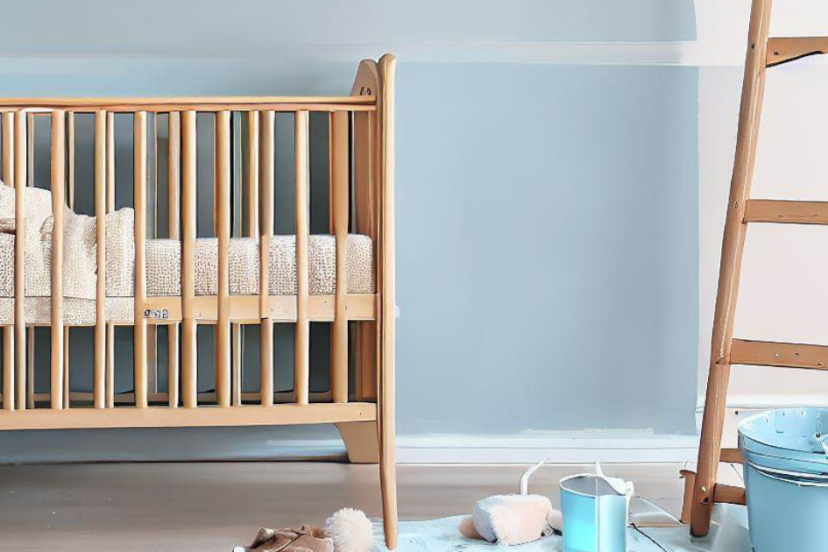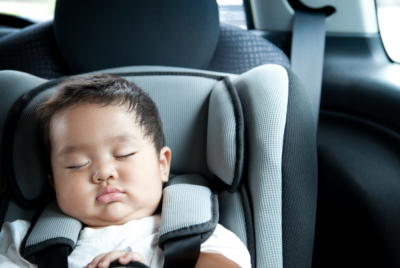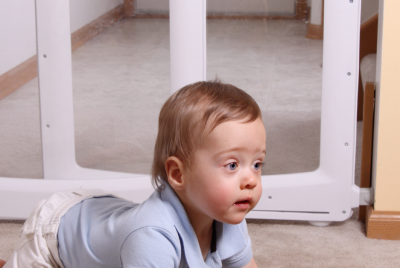As parents, we always strive to provide the best and safest environment for our babies. From choosing organic food to baby-proofing our homes, every decision we make is centered around their well-being. When it comes to decorating the nursery or any other living space for your little one, selecting the right paint becomes crucial. In this article, I will guide you through the world of baby-safe paint, helping you create a colorful and safe haven for your baby.
Understanding the Importance of Baby-Safe Paint
Paints can release harmful chemicals into the air, known as volatile organic compounds (VOCs), which can be detrimental to your baby’s health. These VOCs contribute to indoor air pollution and can cause various health issues such as respiratory problems, allergies, and even long-term developmental issues. Baby-safe paint, on the other hand, is specially formulated to minimize or eliminate VOCs, making it a healthier choice for your baby’s living environment.
Types of Baby-Safe Paint
When it comes to baby-safe paint, there are several options available in the market. Let’s explore the most common types:
Water-Based Paints
Water-based paints are an excellent choice for nurseries and baby rooms. They have low VOC content, dry quickly, and are easy to clean up. These paints are also available in a wide range of colors and finishes, allowing you to unleash your creativity while keeping your baby safe.
Low-VOC Paints
Low-VOC paints contain significantly reduced amounts of volatile organic compounds compared to traditional paints. They are manufactured to have minimal impact on indoor air quality and are often labeled as “low odor” or “low emission” paints. These paints offer a balance between safety and durability, making them a popular choice among health-conscious parents.
Natural Paints
If you prefer an all-natural approach, you can opt for natural paints made from plant-based ingredients and mineral pigments. These paints are free from synthetic chemicals, solvents, and VOCs. Natural paints are a great eco-friendly choice, ensuring a toxin-free environment for your baby.
Factors to Consider When Choosing Baby-Safe Paint
When selecting baby-safe paint, there are a few important factors to consider:
Paint Types
1. Zero-VOC Paints: These paints are formulated without volatile organic compounds (VOCs), ensuring minimal off-gassing and a healthier indoor air quality. Ideal for nurseries and playrooms, zero-VOC paints offer a wide range of colors and finishes while eliminating harmful toxins.
2. Natural Clay Paints: Crafted from natural clay and mineral pigments, these paints are not only safe for babies but also environmentally friendly. They regulate humidity, making them perfect for maintaining a comfortable atmosphere in baby’s rooms.
3. Milk Paints: Made from milk protein, lime, and earth pigments, milk paints are a safe and eco-friendly option. They create a soft, matte finish and are suitable for a vintage or rustic look in nurseries.
4. Chalkboard Paints: For creative souls, chalkboard paints offer a unique option. They are non-toxic and allow you to transform sections of walls into interactive spaces for artistic exploration.
Other considerations
Non-Toxic Ingredients
Check the label for non-toxic ingredients. Look for paints that are free from heavy metals, lead, phthalates, formaldehyde, and other harmful substances. Opting for paints with natural and organic ingredients can provide additional peace of mind.
Certifications and Safety Standards
Choose paints that meet recognized safety standards and have certifications such as GREENGUARD or LEED. These certifications indicate that the paint has undergone rigorous testing and meets stringent requirements for indoor air quality and safety.
Durability and Washability
Consider the durability and washability of the paint. Babies and toddlers can be quite messy, so it’s important to choose a paint that can withstand frequent cleaning without losing its color or finish.
Addressing Common Issues and Applications
1. Stain Resistance: Babies are notorious for making messes. Opt for washable and stain-resistant baby safe paints, which can be easily cleaned without affecting the paint’s quality or safety.
2. Color Psychology: Choose colors that promote a soothing and nurturing environment. Soft pastels like pale blues, gentle pinks, and soft yellows can create a calming atmosphere, while vibrant accent colors add playful touches.
3. Wall Murals and Designs: Baby safe paints are perfect for creating whimsical wall murals or accent designs. Let your imagination run wild, transforming plain walls into captivating landscapes for your little one to explore.
Preparing the Room for Painting
Before you start painting, it’s essential to prepare the room properly to ensure a smooth and safe painting process. Here are some steps to follow:
Clearing the Space
Remove furniture, toys, and other items from the room to create a clutter-free workspace. This will make painting easier and help protect your belongings from accidental paint splatters.
Proper Ventilation
Ensure proper ventilation by opening windows and using fans to circulate fresh air. Good airflow will help dissipate any paint fumes and ensure a healthier environment.
Protecting Furniture and Flooring
Cover furniture and flooring with drop cloths or plastic sheets to prevent accidental paint spills or splatters. This will safeguard your belongings and make cleanup easier.
Tips for Painting with Baby-Safe Paint
Now that you’re ready to paint, consider the following tips to ensure a successful and safe painting experience:
Choosing Colors
Select colors that are soothing, calming, and conducive to a peaceful sleep environment. Soft pastels, neutrals, and light shades are popular choices for baby rooms.
Testing the Paint
Before applying the paint to the entire room, perform a small patch test on a inconspicuous area to ensure compatibility and desired results.
Applying Multiple Coats
For an even and vibrant finish, apply multiple thin coats of paint rather than a single thick coat. This will also help reduce the concentration of VOCs in the air.
Drying and Curing Time
Allow sufficient drying and curing time between coats and before placing furniture or allowing your baby in the room. This will ensure that the paint fully adheres to the walls and minimizes any potential exposure to odors or residues.
The Role of Dehumidifiers in Faster Drying
While baby safe paints offer numerous benefits, they can sometimes have extended drying times due to their composition. This is where a dehumidifier can play a crucial role. By reducing excess humidity (moisture) in the air, a dehumidifier can expedite the drying process, allowing you to enjoy your freshly painted walls sooner. This is especially helpful in maintaining a controlled environment, preventing issues like paint bubbling or peeling.
In conclusion, the choice of baby safe paint is pivotal in creating a secure and vibrant space for our little treasures. Each type offers its own set of advantages, ensuring a toxin-free environment where our babies can thrive and explore. And, should you find yourself eager to expedite the drying process, consider enlisting the assistance of a dehumidifier to hasten the transformation of your baby’s haven.
Additional Safety Measures
In addition to using baby-safe paint, there are a few additional safety measures you can take to further protect your baby:
Ventilation During and After Painting
Continue to keep the room well-ventilated during the painting process and even after it’s complete. Fresh air circulation helps in dissipating any remaining paint fumes.
Keeping Paint Containers Out of Reach
Store paint containers and supplies in a secure location, out of your baby’s reach. This prevents accidental ingestion or spills.
Cleaning Up Properly
Clean up any paint spills or drips promptly using water and mild soap. Dispose of used paintbrushes, rollers, and other materials safely according to the manufacturer’s instructions.
Regular Inspection and Maintenance
Periodically inspect the painted surfaces for any signs of peeling or damage. Maintain the painted room by cleaning it regularly with non-toxic cleaning products to uphold a safe and hygienic environment for your baby.
Detecting Paint Poisoning in Babies: Signs, Symptoms, and Swift Actions
As a vigilant parent, it’s crucial to be aware of potential risks that could affect our little ones. In this comprehensive guide, I’ll delve into the realm of paint poisoning in babies, equipping you with the knowledge to swiftly detect signs and symptoms. From common red flags to immediate actions, I’ll empower you with the tools to ensure your baby’s safety and well-being.
4 Key Signs: Unveiling the Signs of Paint Poisoning
1. Unexplained Irritability: If your baby suddenly displays unexplained irritability, restlessness, or excessive crying, it could be an indicator of paint poisoning. Babies often communicate discomfort through their behavior.
2. Gastrointestinal Distress: Watch for symptoms such as vomiting, diarrhea, or nausea. These digestive disturbances could stem from ingesting or inhaling toxic paint substances.
3. Breathing Difficulties: Respiratory issues like coughing, wheezing, or shortness of breath should raise concern. Paint fumes or particles in the air could be affecting your baby’s delicate lungs.
4. Skin Reactions: Notice any unusual rashes, hives, or skin irritations on your baby’s body. Direct contact with toxic paint substances can lead to skin reactions.
Immediate Actions for Paint Poisoning
1. Contact a Healthcare Professional: If you suspect paint poisoning, don’t hesitate to call your pediatrician or seek medical assistance immediately. Early intervention is key.
2. Remove from Exposure: Safeguard your baby by removing them from the environment where the potential exposure to toxic paint occurred. Provide fresh air and ventilation.
3. Observe and Document: Keep a close eye on your baby’s symptoms and behavior. Document any changes or developments, which can aid healthcare professionals in making an accurate diagnosis.
4. Do Not Induce Vomiting: Refrain from inducing vomiting unless directed by a medical professional. Inappropriate actions can worsen the situation.
Preventing Paint Poisoning: Safety Measures
1. Choose Baby Safe Paint: Opt for baby safe paints that are labeled as non-toxic, low-VOC, and lead-free. Ensure a safe environment by selecting paint products specifically designed for baby spaces.
2. Proper Ventilation: When painting or renovating, ensure adequate ventilation by opening windows and using fans. This reduces the concentration of paint fumes in the air.
3. Seal and Store Paint Properly: If you have leftover paint, ensure it is properly sealed and stored out of your baby’s reach to prevent accidental exposure.
Conclusion
As guardians of our precious little ones, being vigilant about potential dangers is paramount. Detecting paint poisoning symptoms in babies and taking swift actions can make all the difference in ensuring their health and safety. By staying informed, implementing preventive measures, and seeking immediate medical attention when needed, we can create a secure and nurturing environment for our babies to thrive in.
FAQs
1: Is baby-safe paint odorless?
No, baby-safe paint may still have a slight odor that dissipates over time. While baby-safe paints are formulated to have minimal odor, some odor may still be present during the initial drying period. It’s important to ensure proper ventilation in the room to help reduce any lingering odors.
2. Can I paint the nursery while I’m pregnant?
It’s generally recommended to avoid painting or being exposed to paint fumes during pregnancy, especially in the first trimester. If you must paint, make sure the room is well-ventilated and take frequent breaks to get fresh air. Consider having someone else handle the painting task if possible.
3. Can I use baby-safe paint for furniture?
Yes, baby-safe paint can be used for furniture as well. Ensure that the paint you choose is suitable for the specific type of furniture material, such as wood or metal. Follow the same safety guidelines for application and curing as you would for painting the walls.
4. How long should I wait before letting my baby sleep in a freshly painted room?
It’s best to wait at least 2-3 days before allowing your baby to sleep in a freshly painted room. This will ensure that the paint has fully dried and any residual fumes have dissipated. Proper ventilation during this time is essential.
5. Can I repaint the walls if my baby has allergies?
If your baby has allergies, it’s important to consult with a healthcare professional before making any changes to the environment. They can provide guidance on suitable paint options and any additional measures that may be necessary to minimize allergens in the room.
Closing remarks
Creating a safe and beautiful environment for your baby involves making thoughtful choices, including the selection of baby-safe paint. By opting for paints with zero or minimal VOC content, non-toxic ingredients, and proper certifications, you can create a colorful and safe haven for your little one. Remember to prepare the room adequately, follow painting best practices, and implement additional safety measures. With baby-safe paint, you can transform your baby’s living space into a nurturing and vibrant oasis.
*We may earn a commission from purchases made through our links, at no cost to you. This does not affect our product recommendations. Please see our disclosure to learn more.



